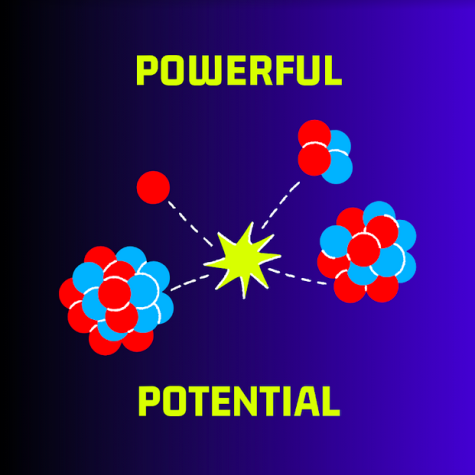The Willow Project: How bad is it?
Climate activists around the globe – not those exclusively to the United States – are anxious for what the Willow Project will bring to the already-uphill battle we are facing.
With President Biden’s latest approval, what can Americans expect to change throughout the country, and what can the world brace for environmentally?
The facts:
An oil drilling project by ConocoPhillips, Alaska’s largest crude oil producer and petroleum refinery company, Willow will be located in the North Slope of Alaska in the National Petroleum Reserve. This will provide up to 600 million barrels of oil once the project is finished.
In terms of gasoline, this equates to three quattuordecillion (3 x 10^14) barrels, with 500,000 barrels of gasoline produced per one million barrels of crude oil. In simpler terms, that is a lot of gas!
This would mean the U.S. and its associated partners would no longer be reliant on oil imports from regions such as Russia, which became even more of an issue after the start of Russia’s invasion of Ukraine.
Not only will the oil be a benefit from this project, but the jobs it will supply to Alaska’s inhabitants will help its large unemployment percentage as compared to other U.S. states. According to ConocoPhillips, the project is anticipated to create roughly 350 permanent jobs and over 2,000 construction jobs through its lengthy establishment.
The concerns:
From an environmental standpoint, the project alone could create as many emissions as 1/3 of all of the coal plants throughout the country, with a projection of 278 million metric tons of greenhouse gas released into the atmosphere during its lifetime. If we are aiming to produce less emissions and make more green-minded efforts to protect our planet, this project may not have been in our best interest.
The project will last for the next 30 years, pumping out harmful greenhouse gases into our atmosphere and dimming out the hope of climate activists alike. Indigenous groups that reside in and continue to protect Alaska against the crushing weight of government intervention have bound together to sue the Biden administration over this project.
Their fears range from the lack of environmental awareness of the administration and consideration of what this will potentially do to our climate, to the damage of protected land and wildlife.
Even as President Biden erects new national monuments of federally sheltered land, the irony is not lost. If Willow goes through, it will hurt the caribou population that Indigenous peoples rely on for sustenance, and the native communities may never recover from this loss. New national monuments will not make up for those subjected to drilling and excavation for replaceable forms of energy.
In the case of the Willow Project, it is hard to see how the potential pros outweigh the cons, unless one is viewing it from an economical and gas-production standpoint. If one chooses to look at the potential impact, both environmentally and morally, they may feel differently.
Visit ProtecttheArctic.org if you are interested in stating your stance on Willow.














yousef • Mar 29, 2023 at 10:13 AM
Gas and oil must be used as a stepping stone to a different fuel source. I generally agree that it is against the interest of the environment to extract more resources than necessary. Currently the geopolitical situation in the east threatens our way of life as we know it. If russia and china are able to consolidate a majority of the fuel and farmland in the world under their alliance and supplant the dollar as the world reserve currency then the perceived utility and demand of the dollar will fall dramatically. They will wield leverage against the USA and cudgel us into submission. China and Russia and India are far worse polluters than the USA so i am not sure this is necessarily a bad thing in the long run.
gustav • Apr 5, 2023 at 12:20 PM
Well according to wikipedia the US is the second biggest polluter in the world, after china. More than India and russia put together actually… So you guys have a big responsibility to climate change and the willow project would not make it any better.
yousef • Apr 10, 2023 at 11:26 AM
according to wikipedia…. interesting choice for a reference. i think the UN 2021 report disagrees slightly.
Lets grant that you’re correct for the sake of argument. How does outsourcing our energy consumption needs to the likes of china, russia india and saudi arabia help the climate? China has even taken to build coal fired powerplants by the dozens every year for the foreseeable future.
These countries care much less about polluting the environment than we do in the USA and would gain leverage against the USA in the world stage. Furthermore they are not subject to the jurisdiction of the USA like domestic energy producers.
Do we go cold turkey on our energy needs and starve and freeze the poor? What do you think happens if the cost of electricity and gas spike dramatically over night? Do you think the poor will all of a sudden just accept starving and freezing or will they go to less green sources such as wood?
The oil and gas industries not only supply gas to run our cars and heat our homes but they also produce fertilizer we use to grow our crops.
In my opinion demand for electric cars are not an ethical option either. a majority of the components (like lithium and cobalt) are mined using black child slave labor. Are you on the side that would drive up and mandate demand for commodities produced by black child slaves?
I think the best path forward are something like the following:
1. Ramp up domestic production of natural resources,
2. Study the product lifecycle for products and incorporate within their planned life cycle a plan for recycling
3. Mandate legislation for a right to repair for consumer items like appliances and electronics (think Chiltons for phones and toasters). no more pentalobe or “y” fasteners or adhesively bonded backs of phones. and please mandate that all phones sold in the USA have standard features like expandable memory, replaceable batteries etc.
4. ban companies from using materials produced with any sort of child slave labor (or slave labor more generally). This was attempted recently but was shot down in the US senate.